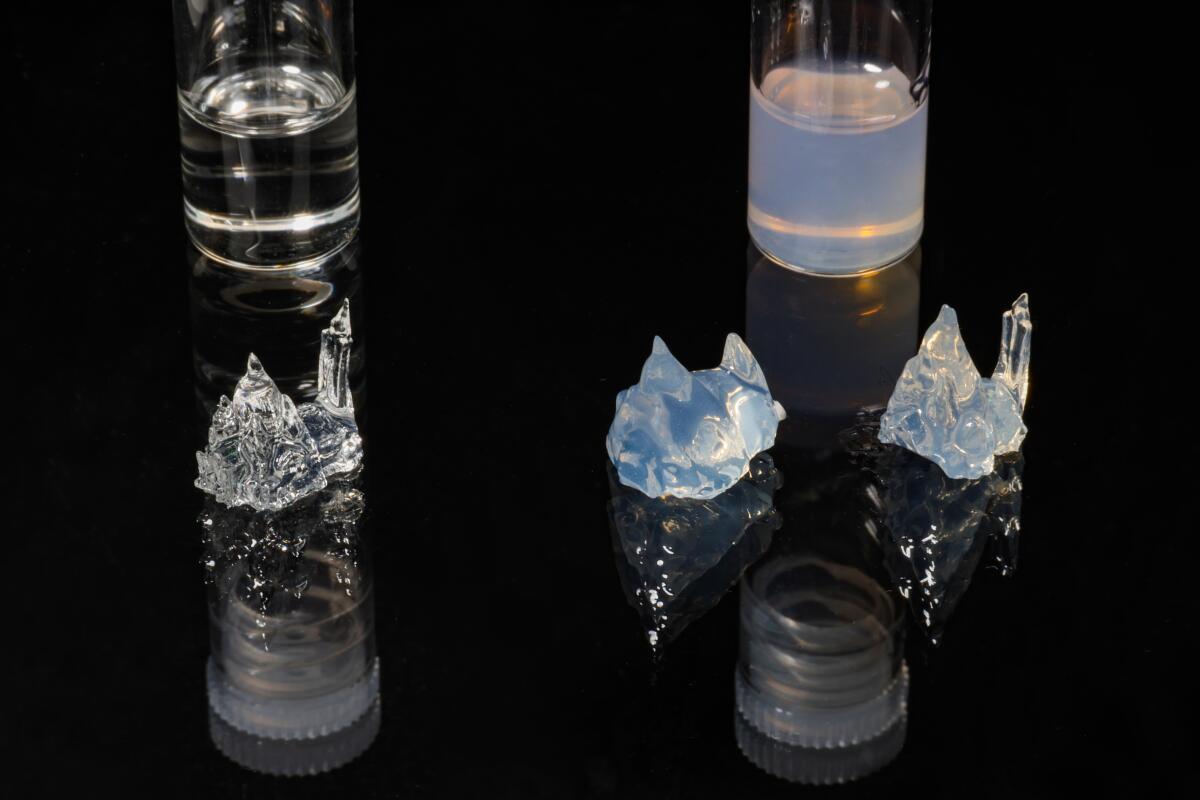

EPFL's super-fast 3D-printing technique makes resin objects in seconds
source link: https://newatlas.com/3d-printing/epfl-3d-print-resin/
Go to the source link to view the article. You can view the picture content, updated content and better typesetting reading experience. If the link is broken, please click the button below to view the snapshot at that time.

EPFL's super-fast 3D-printing technique makes resin objects in seconds

Researchers at EPFL have demonstrated a light-based 3D-printing method that's about 30 times faster than conventional additive manufacturing, creating objects in 20 seconds that would normally take more like 10 minutes thanks to photocurable resins.
Where regular 3D printing is all about sticking blobs of material on a substrate and allowing (or causing) it to solidify, EPFL's light-based process, pioneered back in 2017, takes a totally different approach that's much, much faster.
“We pour the resin into a container and spin it,” says Christophe Moser, a professor at the EPFL's Laboratory of Applied Photonic Devices. “Then we shine light on the container at different angles, causing the resin to solidify wherever the accumulated energy in the resin exceeds a given level. It’s a very precise method and can produce objects at the same resolution as existing 3D-printing techniques.”
Building things this way is extremely quick – tens of seconds as opposed to minutes. Another advantage is that you can print shapes with complex hollow sections without needing the kind of support structures you do with a flat-bed printer.
The problem with this technique, up until now, has been that it's only been possible using transparent resins – since anything with a bit of color in it, such as the opaque resins used to make artificial arteries in the biomedical industry, would bend and distort the light as it came through, causing a drastic loss in resolution and some pretty sad-looking printed objects.
But in new research released this week, Moser and his team demonstrate a technique that allows the use of opaque resins, by using a video camera behind the resin to calculate the path of the light through the resin. After analyzing the light that made it through, the team was able to create a distortion correction algorithm, and apply it to the print instructions as the machine operates so that the correct amount of energy arrives at each spot.
The resulting printed pieces in opaque resin, says the team, are still very quick to make – the team produced a small printed Yoda in about 20 seconds. They're also almost the same resolution as for transparent resin at about one-tenth of a millimeter. The team is now working to increase that resolution a hundred-fold, aiming for micrometer level precision.
The research is open access in the journal Advanced Science.
Source: EPFL
Recommend
About Joyk
Aggregate valuable and interesting links.
Joyk means Joy of geeK

